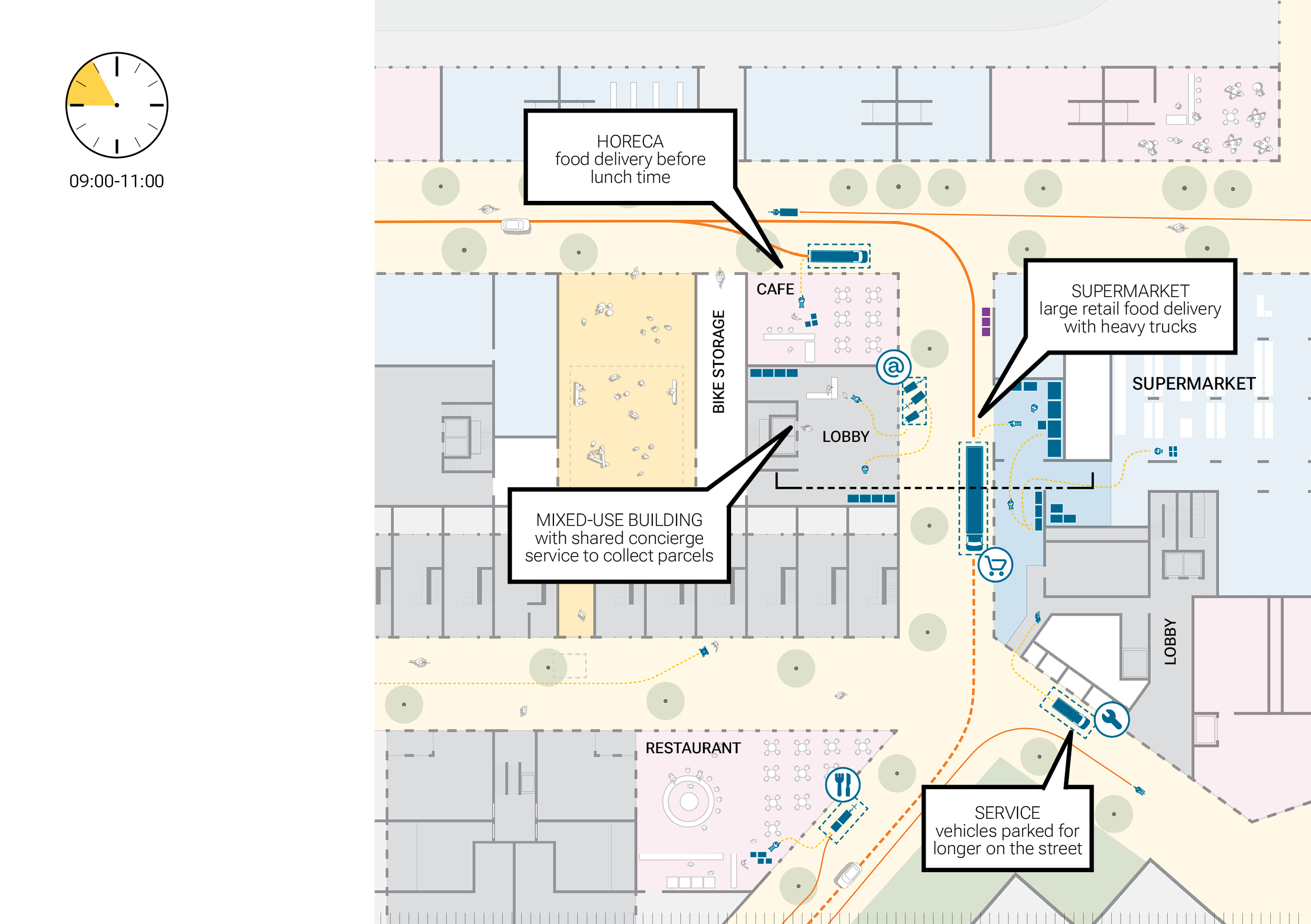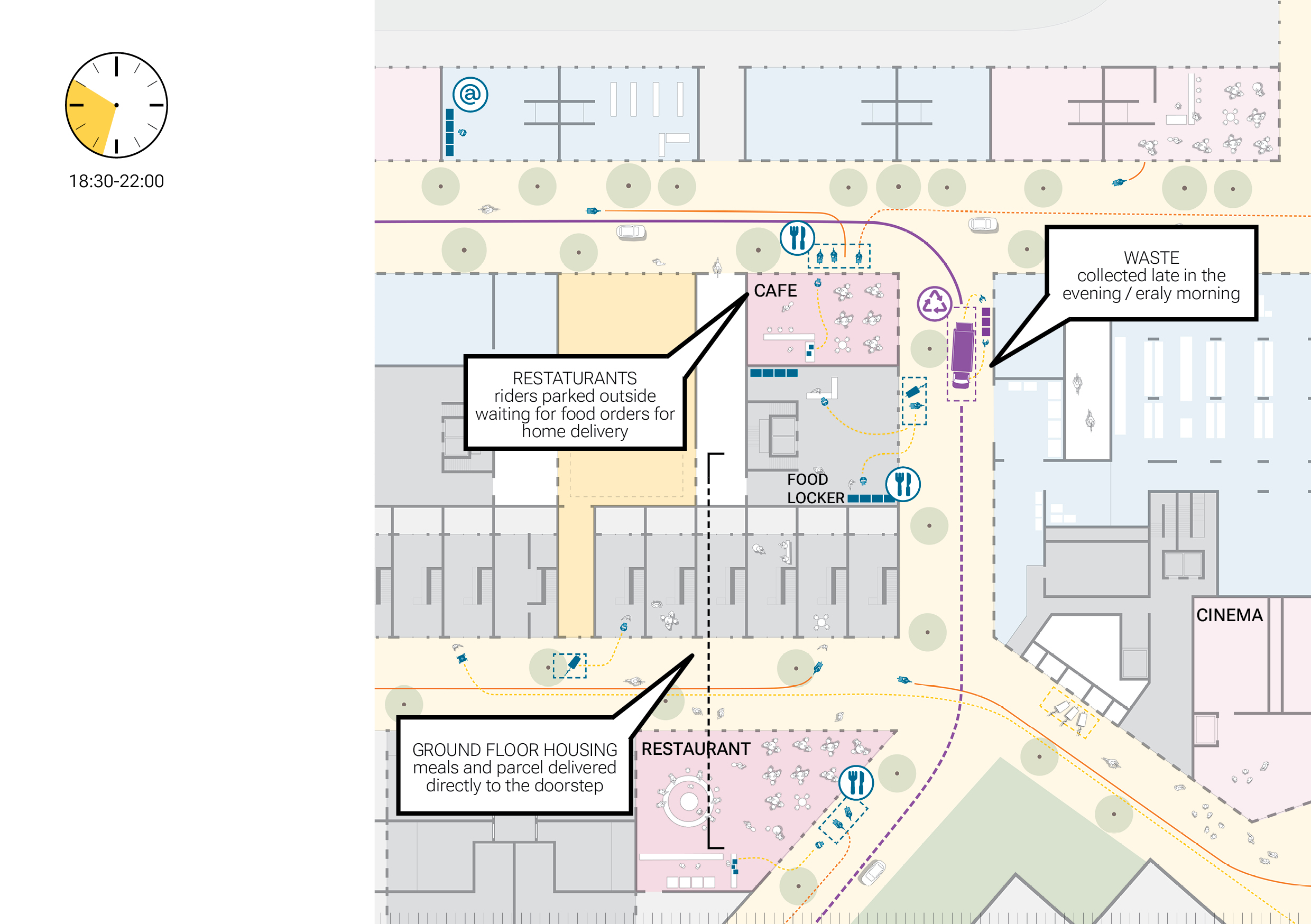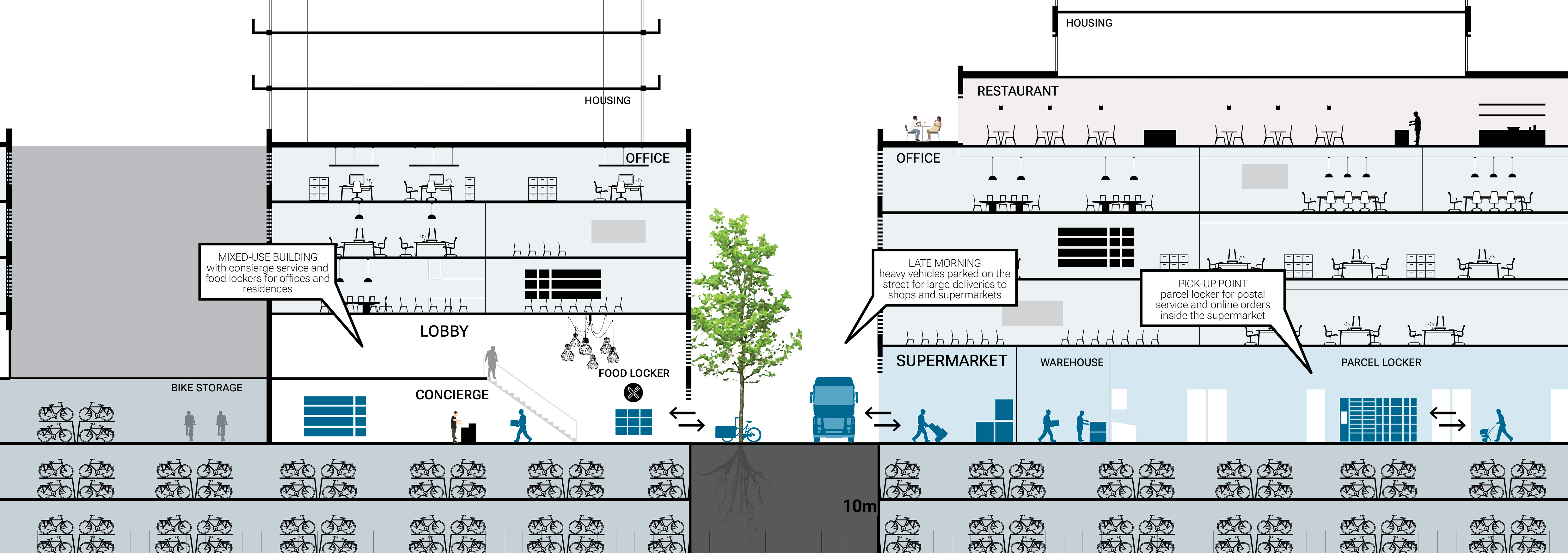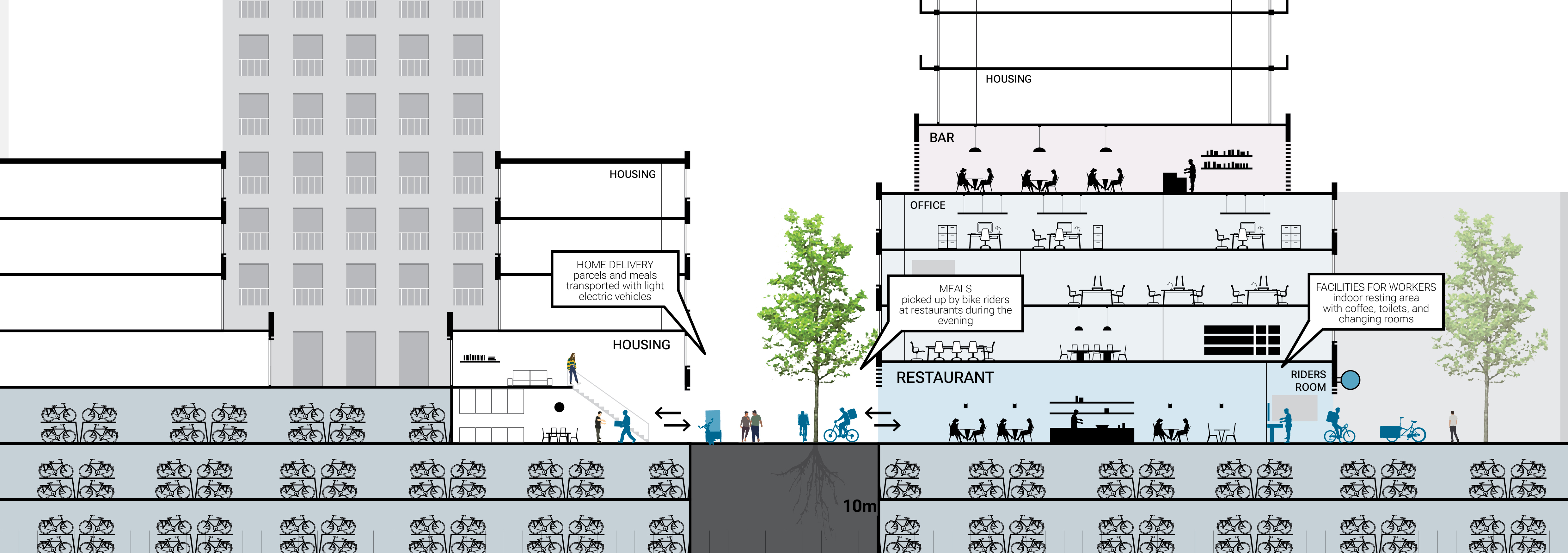How to estimate the impact of last mile delivery on public space and street design?
The + Station Area in Leiden is a high-density, mixed urban district, linked to the main mobility hub of the city. The main pedestrian flows to the train station occur through a central spine (Stationsweg), while the surrounding blocks host parking facilities for cars and bikes. The public space is characterised by a narrow street network (10 m wide streets) serving a number of functions, such as dwellings, offices, horeca, leisure and retail activities.
![Late morning]()
![Dinner / Evening]()
Street sections showing the relationship between building programme and public space at different times of the day are the primary tools of analysis and design. Using these sections, we study a series possible situations in which logistic and other urban activities that take place on the street interact, during specific time windows.
![Mixed-use building – Supermarket]()
![Kindergarten – Shop]()
![Housing – Restaurant]()
The + Station Area in Leiden is a high-density, mixed urban district, linked to the main mobility hub of the city. The main pedestrian flows to the train station occur through a central spine (Stationsweg), while the surrounding blocks host parking facilities for cars and bikes. The public space is characterised by a narrow street network (10 m wide streets) serving a number of functions, such as dwellings, offices, horeca, leisure and retail activities.


Street sections showing the relationship between building programme and public space at different times of the day are the primary tools of analysis and design. Using these sections, we study a series possible situations in which logistic and other urban activities that take place on the street interact, during specific time windows.



We developed a methodology that embraces the complexity of last mile logistics in dense urban areas, using several variables that can be steered by policy makers and designers during the design process: the logistic flows corresponding to specific functions; the type of delivery vehicle that can be used in different zones; time windows adjusted per vehicle type; delivery points organised inside the buildings as a device to reduce the pressure on the street.
![Estimating the impact of last mile delivery]()
![Estimating the impact of last mile delivery]()
![Estimating the impact of last mile delivery]()
![Estimating the impact of last mile delivery]()
![]()
![Vehicle types]()
![Leiden Station Area street scape]()







Place Leiden NL
Date 2023-2024
Type Urban design study
Client Municipality of Leiden
Team NEW ENVIRONMENTS, Urban Dynamics
Date 2023-2024
Type Urban design study
Client Municipality of Leiden
Team NEW ENVIRONMENTS, Urban Dynamics
